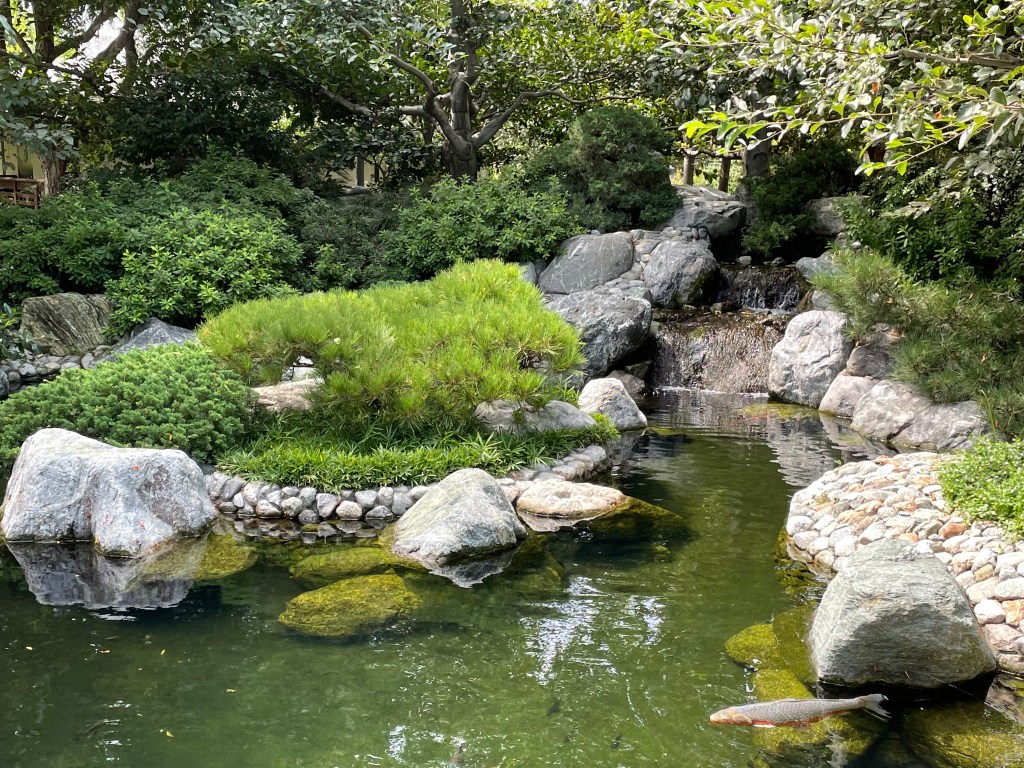Japanese gardens are different from other gardens. They are characterized by simplicity and minimalism, designed to encourage reflection and meditation. They raise landscape architecture to a fine art form, creating harmony of several key elements in a natural setting: stone (from gigantic boulders to pea-size river rock), sculpture, plants, shrubs, trees, paths, and perhaps most important, water. Running water, cascading falls, and shaded pools with large koi fish are almost always included. On the botanical side, there are usually plenty of evergreens, but typically in a wide variety of shades and textures depending upon the garden’s geographic location. Although there are several different types of Japanese gardens based on terrain and purpose, most are composed of the above-mentioned features.

My wife and I have visited many different public and private gardens over the years, from coast to coast in America and a few in Europe too. We happen to have a Japanese garden where we live in Springfield, Missouri. We enjoyed a stroll through the Japanese Friendship Garden in Phoenix, Arizona several years ago. In August 2022, we were on a vacation in San Diego, so of course, we specifically sought out the Japanese Friendship Garden there, which is one of the most famous in the country.


Like other Japanese Friendship Garden cities, San Diego has a sister city, Yokohama, in Japan. The partnership was established in 1957 and was one of the first sister cities on the west coast. The Japanese Friendship Garden in San Diego opened in 1991 and has expanded over the years to a size of twelve acres. Among the garden’s many features are a cherry tree grove, a large section of azaleas and camelias, a water feature that mimics the San Diego watershed, and a beautiful koi pond. There is a bonsai exhibit and places for rotating exhibits of art. It really is one of the finest attractions we saw in San Diego.



